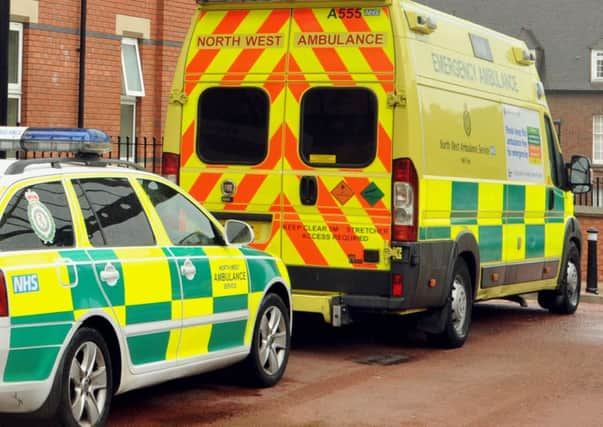Horrific death in squalor of seven-week-old baby with 14 broken ribs


The Wigan Safeguarding Children Board (WSCB) dossier was published yesterday after a serious case review.
It found the baby, who is referred to as Child E throughout the report to protect the identity of his siblings, had 14 rib fractures at the time of his death, although some may have been caused by attempts to resuscitate him. And they also found strong evidence even his basic needs were not being met by his parents, both of whom had learning difficulties.
Advertisement
Hide AdAdvertisement
Hide AdThe report criticised officials for failing to properly identify risks to the youngster, failing to share information and not communicating effectively with the parents.
Kath Nelson, chairman of WSCB, said: “Our thoughts firstly go to the family who have lost their child.
“This was a complex case with a number of different agencies having close contact with this family due to the wide range of help required.
“This SCR has given all those agencies the chance to work together to analyse the various interactions with the family and the cumulative effect of these.
Advertisement
Hide AdAdvertisement
Hide Ad“After the opportunity to review the services I am satisfied the involved agencies have noted and taken steps to address the failings in this sad case.”
The review was first launched after a post-mortem found Child E had suspected non-accidental injuries. These, however, were not the cause of his death, which was suspected as being cot death.
The report highlighted a number of recommendations for better working between the different services who had contact with the family.
An experienced review author was appointed and they drew on the experiences of the case to determine what lessons could be learned by the agencies involved in the incident and made recommendations.
Advertisement
Hide AdAdvertisement
Hide AdThe family had been identified as one with complex needs which meant they had contact with services including health services, social care and housing.
The review highlighted the importance of the role a lead professional plays when a series of agencies are involved.
Mrs Nelson added: “Safeguarding is everyone’s responsibility and as a board we want to make children and young people feel safe and cared for in Wigan borough.”
The report concluded that a risk and needs assessment needs to be dynamic and carried out on a daily basis because of the vulnerability of the children.
Advertisement
Hide AdAdvertisement
Hide AdHowever, overall assessment of risk was not well enough developed and there were many examples of situations where risk were not noticed or not responded to effectively.
The report states: “Organisations need to ensure that practitioners are aware of and use the most appropriate risk and assessment frameworks within their own agency and multi-agency contexts and that these are informed by up to date evidence and best practice.
“There was significant evidence that the children’s basic needs were not consistently being met. The family’s living conditions were extremely unfavourable to caring adequately for a new born baby with health problems.”
The report also found the family house was cold and dirty, the cot bedding and clothing was damp, and there was a lack of food and basic cleaning equipment.
Advertisement
Hide AdAdvertisement
Hide AdAll three children were suffering from nappy rash and all were described as “flithy and unkempt”.
“It is apparent that at several points in this case there were opportunities for managers and/or supervisors to make a positive difference through encouraging staff to critically reflect on their practice.
“Overall the extent to which the supervision provided to professionals gave the opportunity for critical reflection is dubious, given the failure by any agency to critically analyse and assess risk and need in this case.
“Wigan Safeguarding Children Board should review the local Neglect Strategy and using learning from this review ensure that it responds appropriately to families where compounding issues of co-existing factors such as mental illness, domestic abuse and learning difficulties exist.”
The two older children have now been taken into foster care.